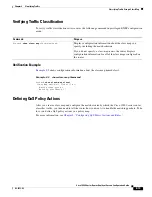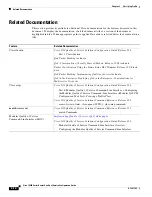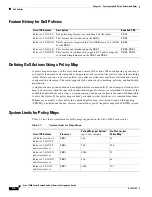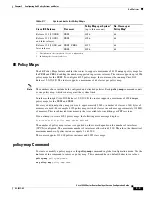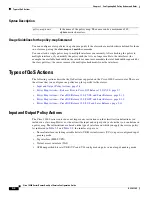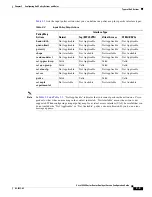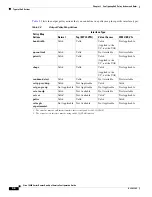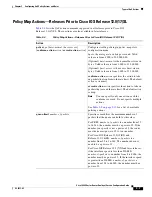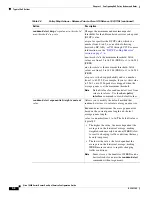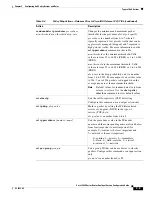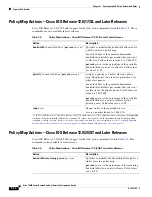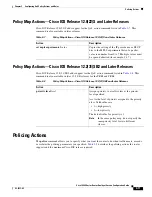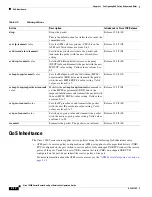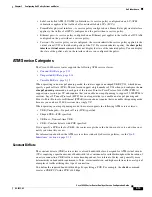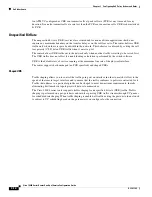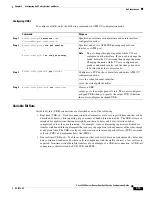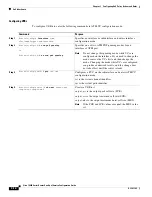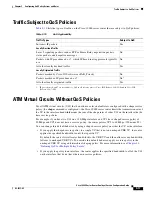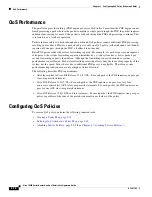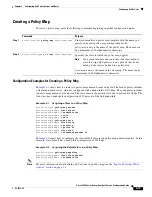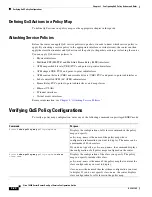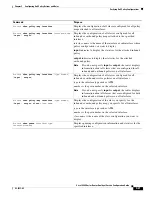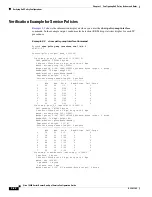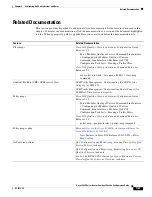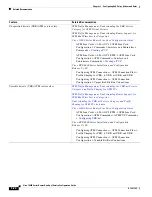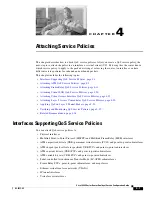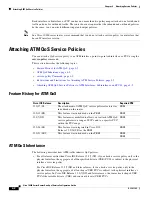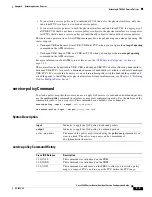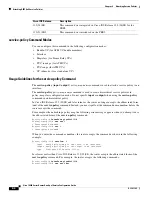
3-13
Cisco 10000 Series Router Quality of Service Configuration Guide
OL-7433-09
Chapter 3 Configuring QoS Policy Actions and Rules
QoS Inheritance
•
Label-controlled ATM (LC-ATM) subinterface—A service policy configured on an LC-ATM
subinterface applies to the traffic of all constituent labeled VCs (LVCs).
•
Frame Relay physical interface—A service policy configured on a Frame Relay physical interface
applies to the traffic of all PVCs configured on the port without a service policy.
•
Ethernet port—A service policy configured on an Ethernet port applies to the traffic of all VLANs
configured on the port without a service policy.
•
Session—If a service policy is not configured, the session inherits the service policy applied to the
virtual circuit (VC) or the inherited policy of the VC. If a session inherits a policy, the
show policy
interface virtual access
command does not display the state of the inherited policy. You can display
the state of the policy only on the interface where you configured the policy.
ATM Service Categories
The Cisco 10000 series router supports the following ATM service classes:
•
Constant Bit Rate, page 3-13
•
Unspecified Bit Rate, page 3-14
•
Variable Bit Rate, page 3-15
When operating in no atm pxf queuing mode, the router supports unshaped UBR PVCs, which do not
specify a peak cell rate (PCR). The router can support a high number of VCs when you configure the
no
atm pxf queuing
command on each port of the router. Point-to-Point Protocol over ATM (PPPoA)
supports one session per VC and requires that you enable no atm pxf queuing to support 32,000 PPPoA
sessions. Layer 2 Tunnel Protocol (L2TP) does not require that you enable no
atm pxf queuing and
Point-to-Point Protocol over Ethernet (PPPoE) sessions do not require that you enable this queuing mode
because you can have 32,000 sessions on a single VC.
When operating in atm pxf queuing mode, the router supports the following ATM service classes:
•
UBR (Unshaped)—No peak cell rate (PCR) specified
•
Shaped UBR—PCR specified
•
VBR-nrt—Non-real-time VBR
•
CBR—Constant bit rate with PCR specified
If you specify a PCR value for UBR+, the router accepts the value, but does not use it, and it does not
notify you when this occurs.
For information about how the ATM service classes inherit QoS service policies, see the
“QoS
Inheritance” section on page 3-12
.
Constant Bit Rate
The constant bit rate (CBR) service class is a fixed bandwidth class, designed for ATM virtual circuits
(VCs) requiring a specific amount of bandwidth to be continuously available throughout the duration of
an active connection. CBR traffic is more time-dependent, less tolerant of delay, and generally more
deterministic in bandwidth requirements. Voice, circuit emulation, and high-resolution video are typical
examples of traffic utilizing this type of connection.
You define the required bandwidth in kbps by specifying a PCR. For example, the
cbr 64
command
creates a CBR PVC with a PCR of 64 kbps.

